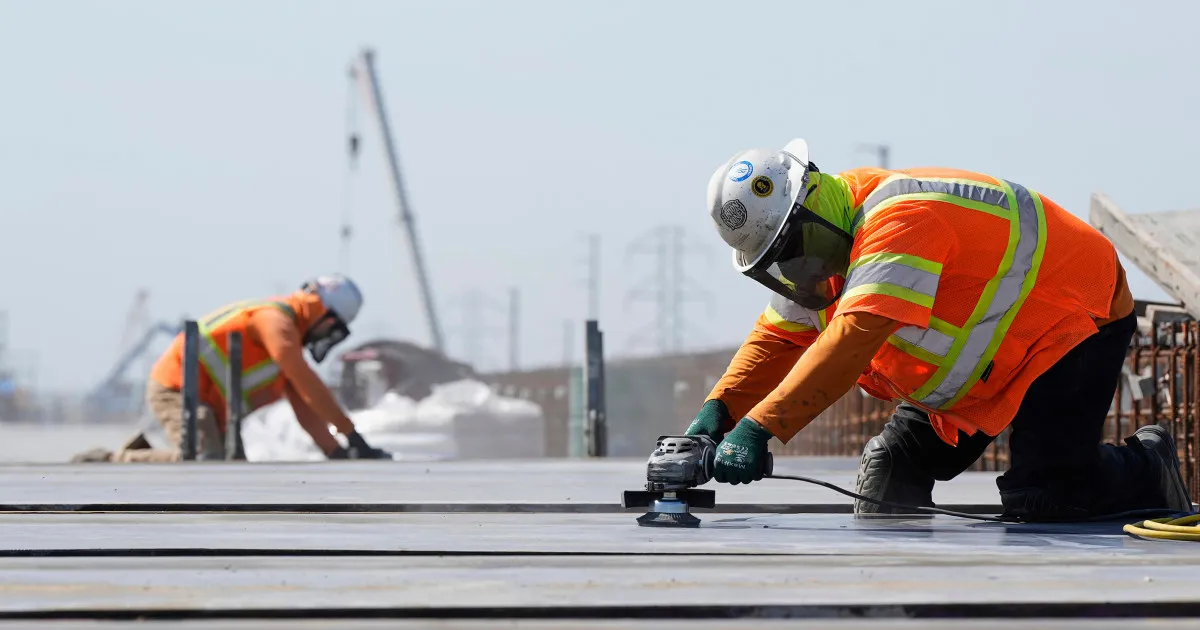
SACRAMENTO, Calif. — The recent decision by the Trump administration to revoke federal funding for California’s ambitious high-speed rail project has sparked significant uncertainty regarding the future of this long-delayed initiative. On Wednesday, the U.S. Transportation Department announced it would be pulling back $4 billion in funding, following earlier indications that such a move was forthcoming. This funding cut is particularly concerning as federal contributions account for less than a quarter of the total project costs, with the remainder primarily sourced from state funds, including a voter-approved bond and revenue from the state's cap-and-trade program.
Both President Donald Trump and Transportation Secretary Sean Duffy have openly criticized the California high-speed rail, labeling it a “train to nowhere.” In a post on Truth Social, Trump stated, “The Railroad we were promised still does not exist, and never will. This project was Severely Overpriced, Overregulated, and NEVER DELIVERED.” This stark commentary highlights the growing skepticism from the federal government regarding the feasibility and management of the project.
The withdrawal of federal funds is yet another setback for California, coming amidst a series of actions by the Trump administration that have affected state policies. These actions include blocking a pioneering rule aimed at phasing out the sale of new gas-powered cars, launching investigations into university admission policies, and threatening to withdraw funding over issues related to transgender athletes. As the high-speed rail project leaders now seek private investment to cover the estimated cost of over $100 billion, the future of the project hangs in the balance.
Originally approved by voters in 2008, the California high-speed rail was expected to begin operations within this decade. However, ongoing increases in cost estimates and delays have pushed back the timeline significantly. Currently, state officials are concentrating on constructing a 119-mile (192-kilometer) stretch that will link the Central Valley cities of Bakersfield and Merced, with plans to have it operational by 2033.
The California High-Speed Rail Authority is preparing to release an updated funding plan and timeline report for state lawmakers this summer. In a letter to officials, the Authority expressed concerns that the Trump administration had predetermined its decision to revoke funding without a thorough evaluation of the project's progress. They emphasized that over 50 structures, including underpasses, viaducts, and bridges, have already been constructed to enhance safety by separating the rail line from roadways.
Authority CEO Ian Choudri stated, “Canceling these grants without cause isn’t just wrong — it’s illegal. These are legally binding agreements, and the Authority has met every obligation, as confirmed by repeated federal reviews, as recently as February 2025.” The Authority has issued a call for private investors to express their interest by the end of the month, as they seek alternative funding solutions.
Democratic Governor Gavin Newsom has vowed to explore “all options” to challenge the revocation of federal funds, asserting, “Trump wants to hand China the future and abandon the Central Valley. We won’t let him.” However, critics within the state, including Drew Feeley, acting administrator of the transportation department’s Federal Railroad Administration, contend that California lacks a viable plan to complete even the Central Valley segment. Feeley characterized the project as a “story of broken promises” and a misuse of taxpayer dollars.
Concerns regarding the financial management of the high-speed rail project have also been echoed by California Democrats. Assemblymember Rebecca Bauer-Kahan noted that her constituents largely view high-speed rail spending as “irresponsible.” To address funding challenges, Newsom has proposed extending California's cap-and-trade program, a crucial source of funding for the project, through 2045. The program regulates greenhouse gas emissions and allocates approximately 45% of the funds generated to the Greenhouse Gas Reduction Fund, which supports various climate and transportation initiatives, including high-speed rail.
As the bullet train project continues to face obstacles, it remains uncertain whether the state can secure the necessary funding and support to fulfill its long-term vision of connecting major Californian cities with high-speed rail.